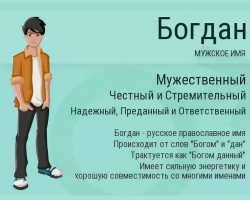In the article about how the rubella is dangerous during pregnancy, how to identify and treat it.
Content
- Symptoms and signs of rubella in pregnant women
- The incubation period of rubella in pregnant women
- Video: Detection of rubella infection in pregnant women
- When to take a rubbish analysis in pregnant women? Antibodies of rubella in pregnant women
- Rubella in pregnant women: consequences for the fetus
- Rubella in pregnant women in the early stages
- Rubella in pregnant women in the second trimester
- Rubella in pregnant women in the third trimester
- How to treat rubella in pregnant women?
- How much after rubella can get pregnant after rubella?
- Rubella and pregnancy: tips and reviews
- Video: Torch - rubella (obstetrician gynecologist Anna Sutsuk)
Rubbound, or Rubella (from Latin Rubella), this is an acute highly visible disease belonging to a group of so -called "children's infections". Many transfer it to childhood. In children, the disease proceeds quite easily and rarely gives complications.
Since resistant immunity is produced to the rubella, the risk of getting sick is almost reduced to zero. Adults who have not “picked up” her in childhood are harder. And for pregnant women, rubella, the infection of which occurred in the early stages, is generally fraught with serious consequences - malformations of the fetus or spontaneous abortion.

Symptoms and signs of rubella in pregnant women
The rubella is caused by the Rubella virus Rubivirus, the Togaviridae family (togaviruses). The extension of them is an airborne droplets. The Rubella virus in the external environment does not live long, therefore, in order to get sick, it is necessary to contact the carrier for a long time.

Getting along with air flows into the upper respiratory tract of a person, the rubella virus first affects their epithelial tissue, and then it is introduced into the blood and lymph nodes, where it is replicated.
In children, rubella can flow typically, with erased symptoms or even asymptomatic. In adults, pregnant women, including symptoms, usually bright. It:
- increase in the lymph nodes (occipital, cervical, near -zausky)
- fever
- cough
- joint pain and muscles, aches
- headache
- conjunctivitis

A characteristic sign of rubella is also a roseoleous or roseoleous-papular rash, which in a pregnant woman appears first on the face, later on the body, arms and legs. Rubber rash is always spread from top to bottom.
The disease lasts from several days to two weeks. In adults, it is often complicated by viral arthritis (lasts 10-14 days), less often with encephalitis (approximately 1 case of 5000).
The incubation period of rubella in pregnant women
The source of infection is more often children, in particular, those that visit preschool institutions and schools, circles and sections. Therefore, women, pregnant second and subsequent times more often get sick. The carrier of the rubella virus is contraged 10 days before the appearance of the symptoms and the moment when secretory immunoglobulin is in serum and nasopharynx.
Important: Immunoglobulin A (IGA) - these are proteins from the class of antibodies, which provide local immunity
The incubation period in a pregnant woman who has become infected with rubella lasts 11-24 days.
Video: Detection of rubella infection in pregnant women
When to take a rubbish analysis in pregnant women? Antibodies of rubella in pregnant women

Torch abbreviation is well known to all future mom. This comprehensive analysis for infectious diseases must be submitted at the pregnancy planning stage or in the early stages of pregnancy, if it has already come. The letter "R" in this abbreviation as it means rubella (Rubella).
Important: other letters in the Torch analysis name mean: T - toxoplasmosis (toxoplasmosis), C - Cytomegalovirus (cytomegalovirus), H - Herpes Simplex Virus (Herpes). O - OTHERS, that is, other infections. Depending on the laboratory, the complex may include tests for chlamydia, syphilis, ureaplasmosis, racing infection, viral hepatitis
In the results of the analysis, the indicators of immunoglobulin A and immunoglobulin G:
| Result | IgM | Igg |
| Inneck immunity no/vaccination is necessary | — | — |
| Immunity to the Rubella virus is | — | + |
| Rubella in acute form, early period | + | — |
| Rubella in acute form, recovery period | + | + |
Rubbanes are vaccinated. Usually, they instill children under 1 year old with subsequent revaccination of 7 and 12-13 years. Unfortunately, the vaccine introduced subcutaneously or intramuscularly does not allow immunity to form a virus in the nasopharynx. Therefore, an immunized person still has a risk of infection.
If a woman passes an analysis for Torch - infections, and he shows that she does not have antibodies to rubella, you can take vaccination from this infectious disease and in adulthood. Since the weakened, but live virus Rubella is vaccinated, there is a theoretical possibility of infection for its fetus. Therefore, vaccination is recommended no earlier than two months before the planned pregnancy.
Rubella in pregnant women: consequences for the fetus
If a woman in a position falls in rubella at 2-4 weeks of pregnancy, the fetal lesion occurs in 60% of cases, at 5-7 weeks-in 30% of cases, at 8 weeks and later-in 10% of cases.

Rubella in pregnant women in the early stages
The Rubella virus penetrates through the placental barrier. If a pregnant woman in the first trimester fell ill with Rubellla, we can even talk about termination of pregnancy. The fact is that during this period the laying of all vital organs and systems in the unborn child takes place, so he can have multiple malformations.
Infected rubella at 1-12 weeks of pregnancy is fraught with damage to the central nervous and cardiovascular systems of the fetus, its organs of vision and feelings. The most common triad of the consequences of the disease of the expectant mother in a child is a heart disease, deafness and cataracts.
Important: the three most common defects in the development of the fetus caused by the Rubella virus are called the Greg triad, the Australian doctor who first described these three anomalies
Other terrible consequences of “harmless” rubella in case of intrauterine infection may be:
- hemolytic disease
- microcephaly
- encephalitis
- Cerebral palsy
- development lag
- dystrophy
- lymphadenopathy
- violations of the anatomy of the facial skull (wolf mouth)
In addition, in the infection of the Rubella virus in the first trimester of pregnancy, it leads to spontaneous termination of pregnancy in 30% of cases, to stillbirth - in 20% of cases, the death of a child during the period of newborn - in 20% of cases.
Rubella in pregnant women in the second trimester
On the strategic strategic stratera, the organs and fetal systems are almost completely formed, so the consequences of rubella in the expectant mother can be serious, but not so catastrophic. Viral infection, impressing the placenta, can lead to:
- oxygen starvation of the fetus
- his small weight
- development of development for two weeks or more
- the birth of a child with an anemia
- weak immunity in a child
The risk of the birth of a dead child falls up to 10%.
Rubella in pregnant women in the third trimester
Congenital rubella in the third trimester often leads to:
- premature birth
- anomalies of labor
- the birth of a child with small height and low body weight
- the birth of a child with pneumonia
- the subsequent lag of the child in development
The risk of intrauterine death of the fetus is reduced to 5 %.
How to treat rubella in pregnant women?
A pregnant woman herself can carry rubella easily. For the period of the disease, it is isolated. It is important to observe bed rest, consume a lot of liquids.
Medication is symptomatic. As a rule, they appoint:
- antipyisetics and analgesics (ibuprofen, paracetamol)

Paracetamol will help to bring down the temperature and reduce the pain - sulfanilomides - antimicrobial drugs (streptocide, biseptol)

Biseptol has a local antimicrobial effect - antibiotics if necessary
If rubella disease occurred up to 16 weeks, an abortion is indicated. If the disease occurred up to 28 weeks, the malformations of the fetus are obvious and confirmed, artificial childbirth is indicated.
If the disease occurred after 28 weeks of pregnancy, additional observation is performed behind the child, the prevention of hypoxia and fetoplacental insufficiency to him. Childbirth is conducted in specialized maternity hospitals.

How much after rubella can get pregnant after rubella?
According to some reports, the malformations of the fetus occurred even if a woman was sick with rubella 6-12 months before pregnancy. Doctors recommend planning a child no earlier than 18 months after recovery from this infectious disease.
Rubella and pregnancy: tips and reviews
Unfortunately, a woman may not always protect themselves from infectious diseases during bearing a child. So that the infection does not occur, planning motherhood, she must remember whether she was tribute in childhood, whether there is a record about this in her medical record, take an analysis and, if necessary, to vaccinate.
Video: Torch - rubella (obstetrician gynecologist Anna Sutsuk)









